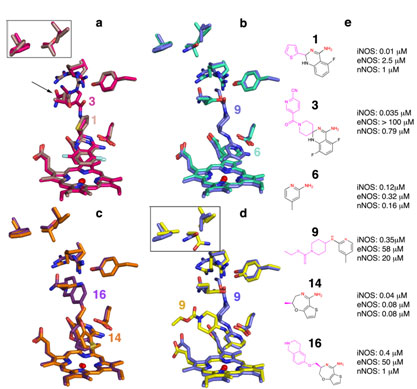In summary, the mutant strains lacking parA grew slower and their cells were elongated compared to the wildtype. Lastly, the Dsred2 sequence expressing a red fluorescent protein was cloned subsequent to MsParA to obtain  expression of MsParA DsRed2 fusion proteins. A linker was placed amongst MsParA and DsRed2 to prevent doable complications with protein folding. The recombinant plasmid pMV261MsTAG GFP/MsParA DsRed2 was electroporated into M. smegmatis. The resulting recombinant M. smegmatis stains were grown in 7H9 Kan Tw media at 37uC for two d, then cultured at 42uC for two h to increase the level of protein expression. Upcoming, cells had been collected and visualized by vivid field and fluorescence microscopy utilizing a Zeiss Axio Scope A1 microscope having a CoolSnap ES CCD camera along with a higher pressure mercury lamp. The MsTAG GFP fusion proteins have been imaged working with a GFP filter and MsParA DsRed2 fusion professional teins have been imaged making use of a TRITC filter .
expression of MsParA DsRed2 fusion proteins. A linker was placed amongst MsParA and DsRed2 to prevent doable complications with protein folding. The recombinant plasmid pMV261MsTAG GFP/MsParA DsRed2 was electroporated into M. smegmatis. The resulting recombinant M. smegmatis stains were grown in 7H9 Kan Tw media at 37uC for two d, then cultured at 42uC for two h to increase the level of protein expression. Upcoming, cells had been collected and visualized by vivid field and fluorescence microscopy utilizing a Zeiss Axio Scope A1 microscope having a CoolSnap ES CCD camera along with a higher pressure mercury lamp. The MsTAG GFP fusion proteins have been imaged working with a GFP filter and MsParA DsRed2 fusion professional teins have been imaged making use of a TRITC filter .
Digital photos have been acquired and analyzed with all the Image Pro Plus computer software . M. smegmatis cells Ms/pMV261, Ms/pMV261MsTAG and Ms/ pMV261 MsTAG E46A have been cultured at 37uC in 7H9 media with 0. 012% MMS, and MsParA deleted mutant strain was grown in 7H9 media without having MMS. SNX-5422 Cells have been harvested, resuspended in phosphate buffered saline , and stained with DAPI for one h at 37uC. Then the cells had been harvested, washed one time with pBS and resuspended in PBS buffer. The samples were examined by vivid area and fluorescence microscopy employing a Zeiss Axio Scope. A1 microscope. The DNA localization was imaged having a regular DAPI filter set . Digital photos were acquired and analyzed with Picture Professional Plus application. MsTAG E46A and MsParA K78A mutants have been produced as outlined by the method described previously .
Two DNA fragments getting overlapping ends had been created by PCR with complementary oligodeoxyribo nucleotide primers . These fragments were mixed within a subsequent fusion reaction by which the overlapping ends anneal, permitting the 39 overlap of each strand to serve Pelitinib as being a primer for that 39 extension in the complementary strand. The resulting fusion solution was amplified further by PCR. The recombinant plasmids were verified by DNA sequencing. ATPase actions of ParA and TAG were assayed as described previously . Reactions were performed in a volume of 50 mL containing 50 mM HEPES, pH 8. 0, 1 mM MgCl two, 200 mM ATP, 150 nM protein at 37uC for 1. 5 h. Reactions have been terminated by the addition of 50 mL malachite green reagent in six N HCl, 2. 3% polyvinyl alcohol , 0. 1% malachite green and distilled water).
The color was permitted to stabilize for five min before the absorbance was measured at 630 nm. A calibration curve was constructed utilizing 0 25 mmol inorganic phosphate specifications and samples have been normalized for caspase acid hydrolysis of ATP by the malachite green reagent. Previous studies have recommended that either raising or reducing ParA expression degree in M. smegmatis impacts bacterial growth . On this research, we initial constructed a parA deleted mutant M. smegmatis strain to even more analyze the results of ParA on mycobacterial development and cell morphology. As shown in Figure 1A, an MsParA deleted mutant M. smegmatis strain was produced employing gene substitute technique . A knockout plasmid pMindMsParA containing the Up and Down areas from the MsParA gene was constructed .
Deletion of MsParA while in the mutant strain was more confirmed by a Southern blot assay as shown in Figure 1D. Signal bands of about 1. 0 kb and 470 bp were detected in the BstE II digested genomic DNA from the mutant and wildtype strains , respectively, which Ponatinib is consistent using the deletion of MsParA from your chromosomal DNA of M. smegmatis during the mutant strain . Next, we measured the growth of mutant and wildtype strains within the surface of solid agar medium and in liquid 7H9 medium. As proven in Figure 2A, once the mycobacterial strains had been spotted on the surface of strong agar medium, a thin bacterial lawn was observed for your mutant strain in contrast towards the thicker lawn for the wildtype, indicating that the parA deleted mycobacterial strain grew at a slower charge than the wildtype.
Expression of parA as a result of a pMV361 derived vector could NSCLC rescue the slow development phenotype from the mutant strain . We further confirmed the development distinction with the over 3 strains by determining their development curves in liquid 7H9 medium. We observed a slower development charge for your mutant strain whilst the complement strain, Msm MsParA::hyg/pMV361 MsParA, grew too as the wildtype strain . Furthermore, we found the cell length with the mutant strain to become approximately 2 fold longer simultaneously stage than that of wildtype M. smegmatis cells .
